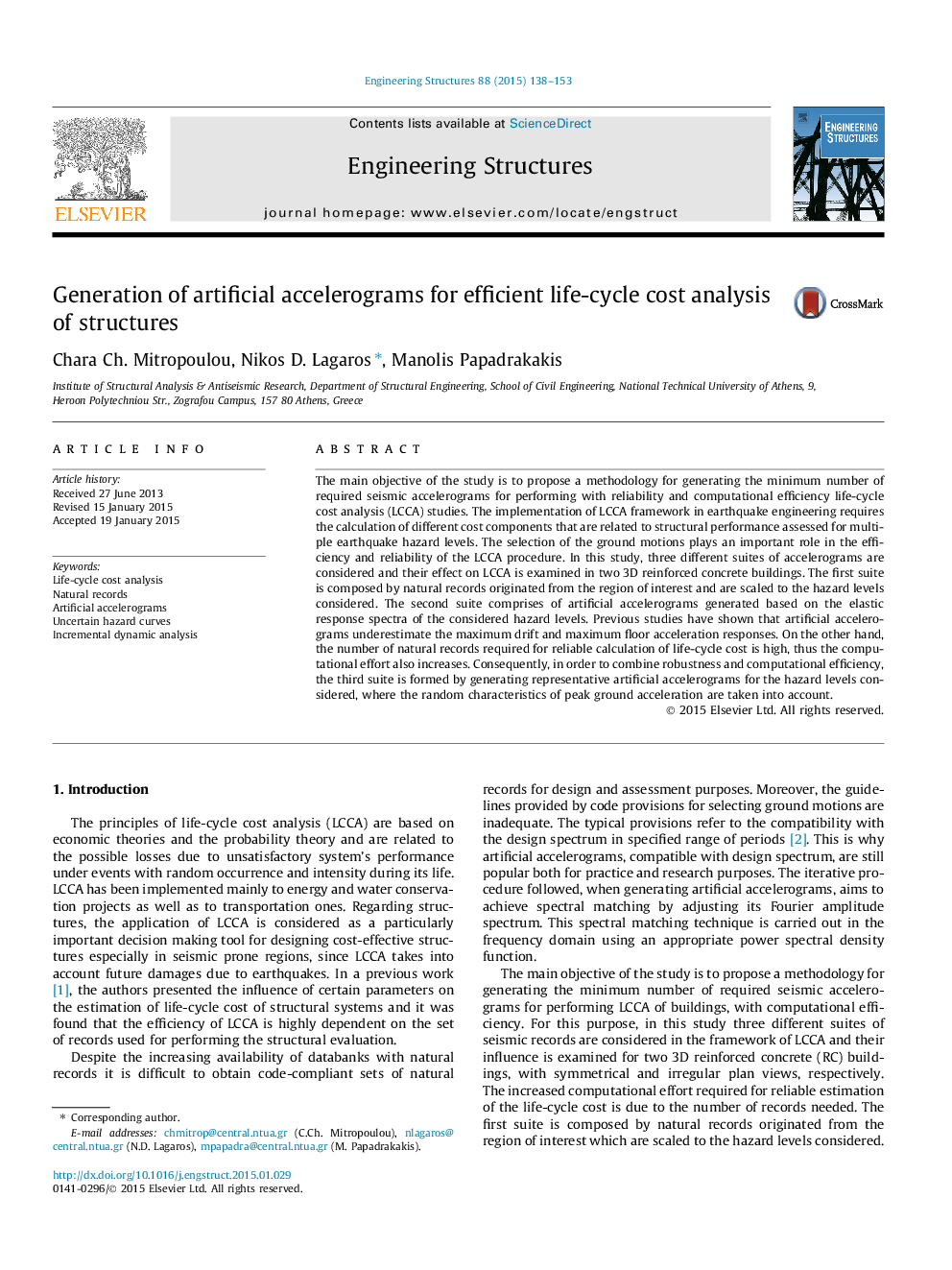| Article ID | Journal | Published Year | Pages | File Type |
|---|---|---|---|---|
| 6740487 | Engineering Structures | 2015 | 16 Pages |
Abstract
The main objective of the study is to propose a methodology for generating the minimum number of required seismic accelerograms for performing with reliability and computational efficiency life-cycle cost analysis (LCCA) studies. The implementation of LCCA framework in earthquake engineering requires the calculation of different cost components that are related to structural performance assessed for multiple earthquake hazard levels. The selection of the ground motions plays an important role in the efficiency and reliability of the LCCA procedure. In this study, three different suites of accelerograms are considered and their effect on LCCA is examined in two 3D reinforced concrete buildings. The first suite is composed by natural records originated from the region of interest and are scaled to the hazard levels considered. The second suite comprises of artificial accelerograms generated based on the elastic response spectra of the considered hazard levels. Previous studies have shown that artificial accelerograms underestimate the maximum drift and maximum floor acceleration responses. On the other hand, the number of natural records required for reliable calculation of life-cycle cost is high, thus the computational effort also increases. Consequently, in order to combine robustness and computational efficiency, the third suite is formed by generating representative artificial accelerograms for the hazard levels considered, where the random characteristics of peak ground acceleration are taken into account.
Related Topics
Physical Sciences and Engineering
Earth and Planetary Sciences
Geotechnical Engineering and Engineering Geology
Authors
Chara Ch. Mitropoulou, Nikos D. Lagaros, Manolis Papadrakakis,
